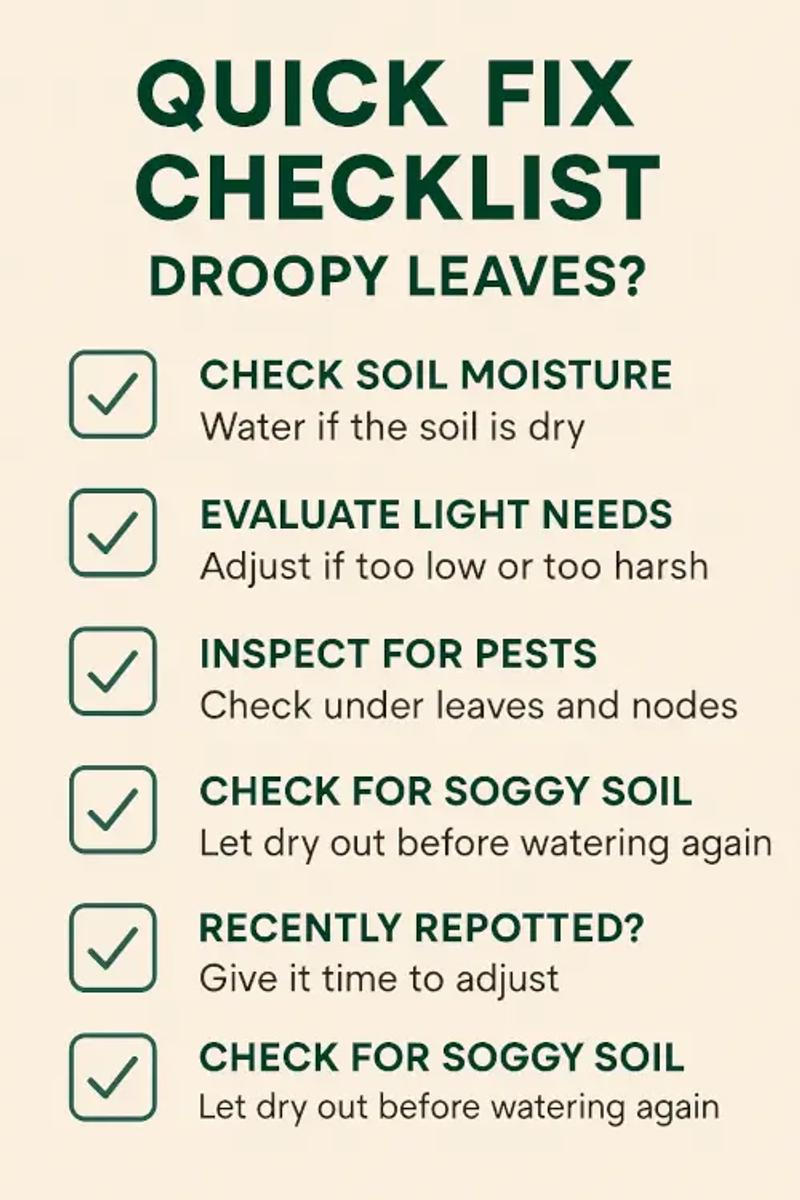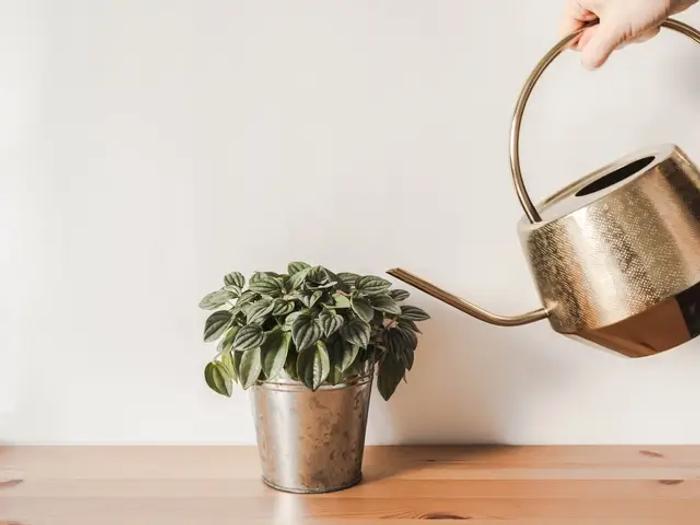Why Are My Plant’s Leaves Drooping? Here’s What It Means
If your plant’s leaves are limp, wilting, or sagging, it’s a clear sign something’s wrong — but don’t worry, most droopy houseplants bounce back fast once you find the cause.
Take the quick quiz below to help diagnose what’s going on, then keep reading for a detailed guide on the most common reasons plants droop — including watering issues, light problems, temperature stress, and more.
What’s Wrong With My Plant?
Not sure what’s causing your plant to droop? Answer a few quick questions and we’ll help you pinpoint the issue.
How dry is the soil right now?
Underwatering
The most common culprit is dry soil. When a plant doesn't get enough water, its cells lose turgor pressure — which makes stems and leaves look limp and lifeless.
How to fix it:
- Check if the soil is dry at least 1–2 inches down.
- Water thoroughly until it drains out the bottom.
- For future prevention, create a consistent watering schedule.
Overwatering
It sounds contradictory, but too much water can also cause drooping. Waterlogged roots can’t take in oxygen, which leads to rot and wilting leaves.
How to fix it:
- Feel the soil — if it’s soggy, hold off on watering.
- Ensure the pot has drainage holes.
- Let the soil dry out before watering again, and consider repotting if root rot is suspected.
Temperature Stress
Extreme heat or cold can shock your plant, especially if it’s near a drafty window, heater, or AC vent. Many plants droop when temperatures fluctuate too quickly.
How to fix it:
- Move your plant to a more stable temperature zone.
- Keep it away from heating or cooling vents.
- Try to maintain a consistent indoor temperature.
Transplant Shock
Just moved your plant to a new pot? Repotting can temporarily stress plants and cause them to droop as they adjust to their new environment.
How to fix it:
- Be patient — it usually recovers within a week or two.
- Water gently and keep light conditions steady.
- Avoid fertilizing immediately after repotting.
Pests or Disease
Certain pests like spider mites or fungal infections can cause plants to wilt. Check for sticky residue, holes, webbing, or unusual spots.
How to fix it:
- Inspect the leaves (top and bottom) closely.
- Treat with neem oil or insecticidal soap if needed.
- Remove infected leaves to prevent spread.
Frequently Asked Questions
Should I water a drooping plant right away?
Not always. Feel the soil first — watering dry soil helps, but adding water to already wet soil can make things worse.
Can drooping leaves recover?
Yes, if caught early. Most plants bounce back within 24–48 hours of proper care.
How long does it take for a plant to recover from drooping?
If the cause is caught early, many plants perk up within 24–48 hours. However, root rot or severe stress can take a week or longer.
Do all plants droop the same way?
Not quite. Some plants, like peace lilies, visibly wilt when thirsty. Others may show more subtle signs like leaf curling or soft stems.
Can too much sunlight cause drooping?
Yep. Direct sun can dehydrate the soil quickly or scorch leaves, leading to wilting — especially in shade-loving houseplants.
Final Thoughts
A droopy plant is calling out for help — but don’t panic. Most of the time, a simple adjustment to watering, lighting, or placement is all it needs. Keep an eye on changes, and your plant will likely perk up in no time.
To help you troubleshoot at a glance, we’ve put together a quick visual checklist covering the most common causes. Feel free to reference it whenever your plant looks a little off:


